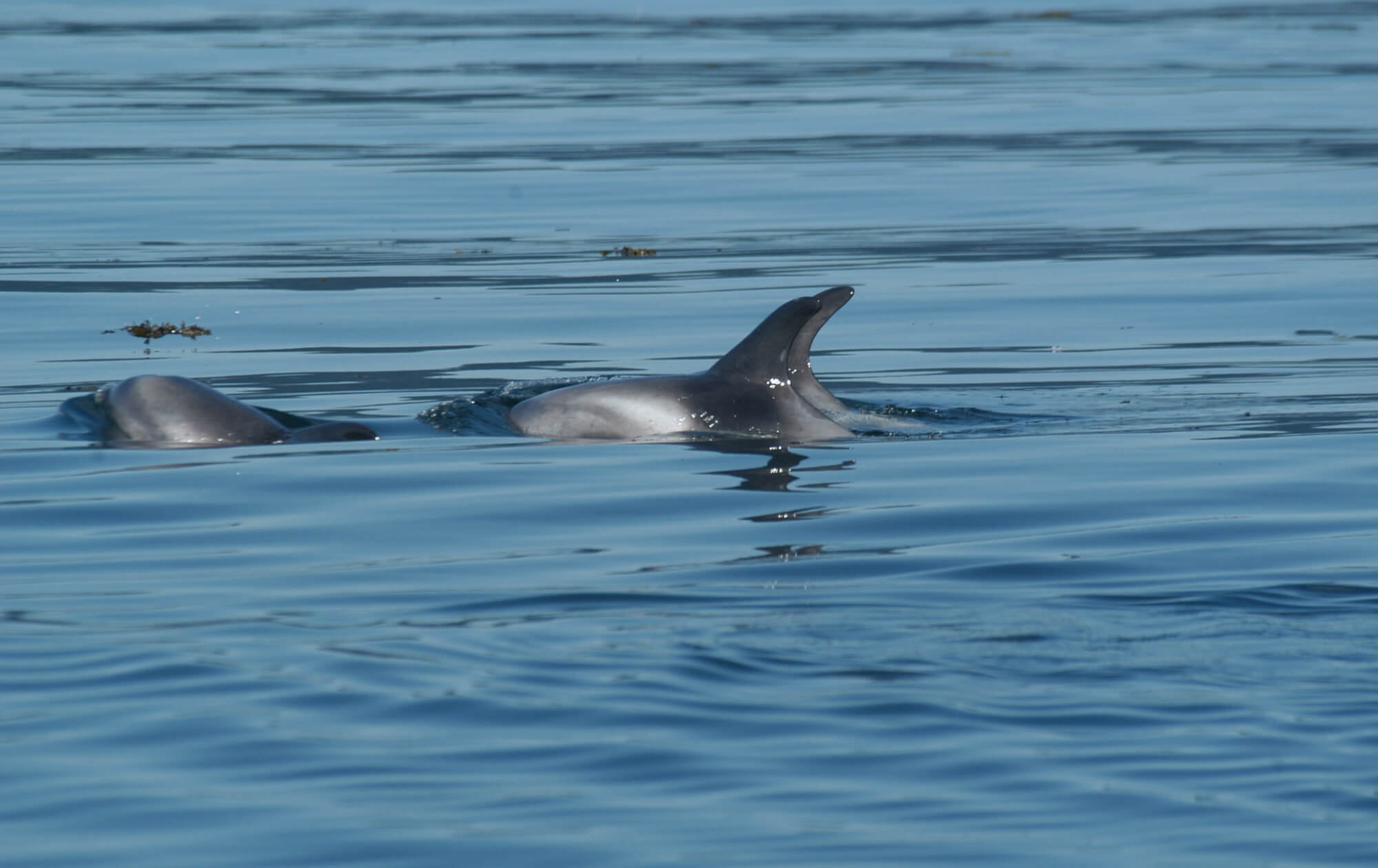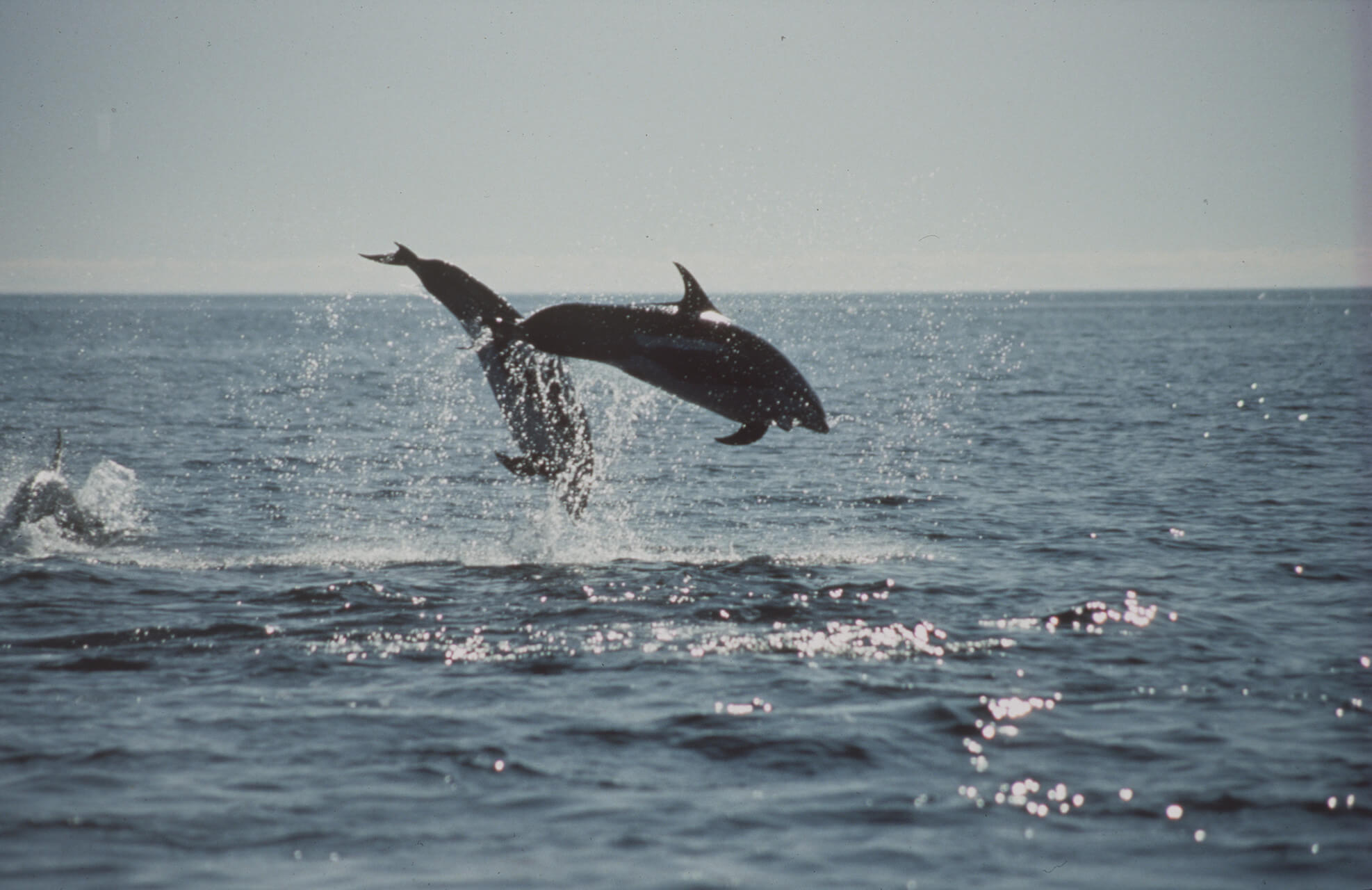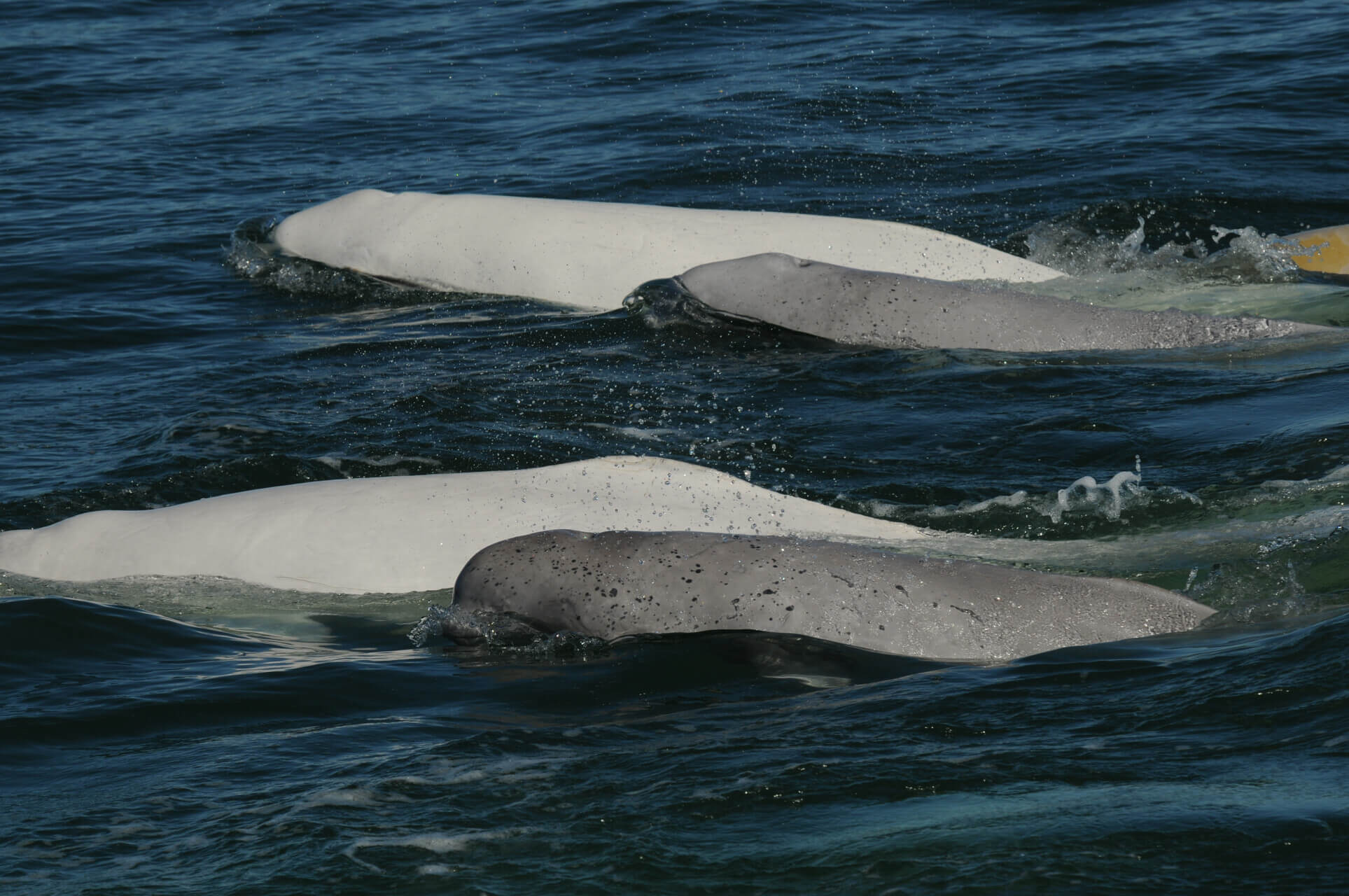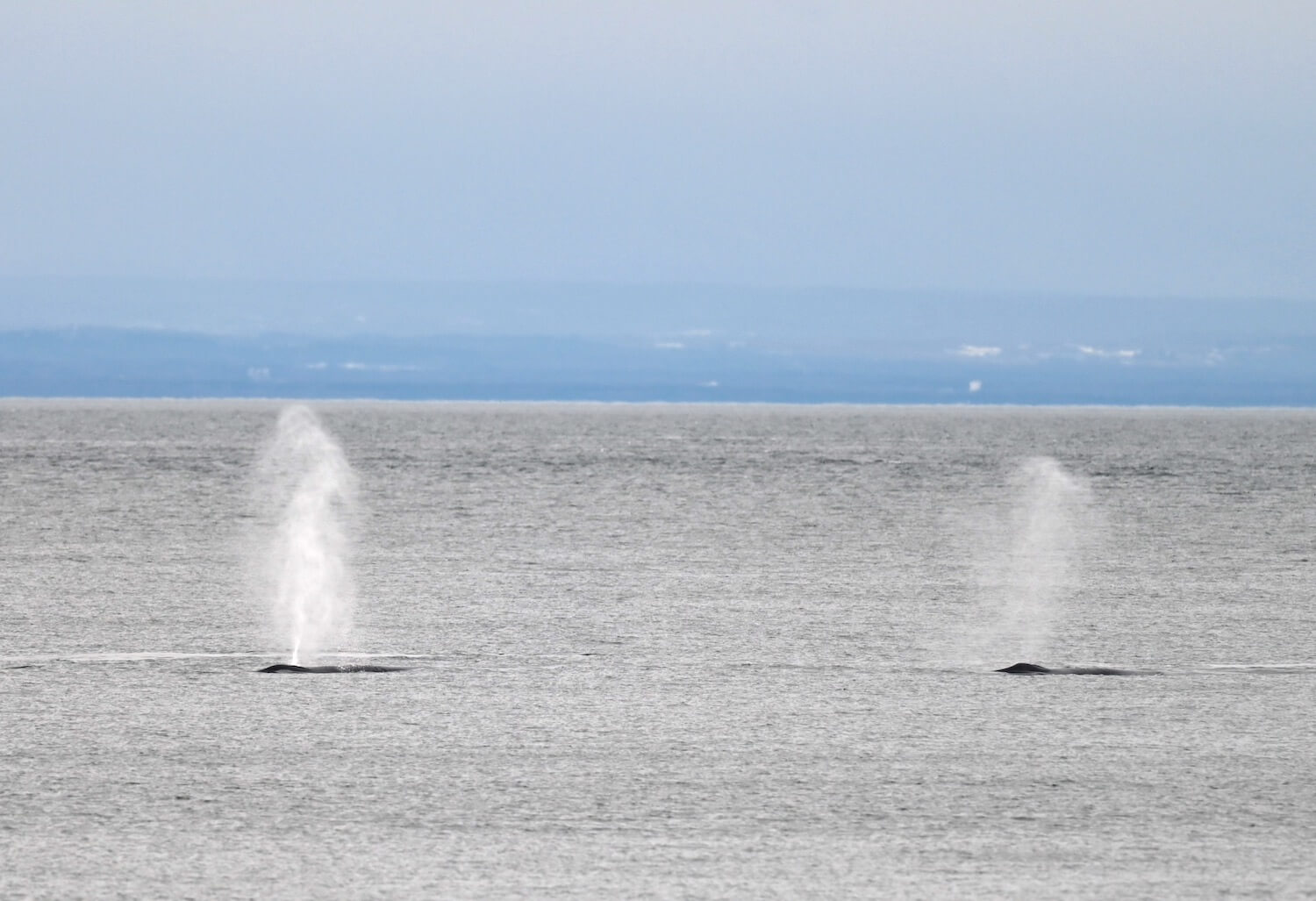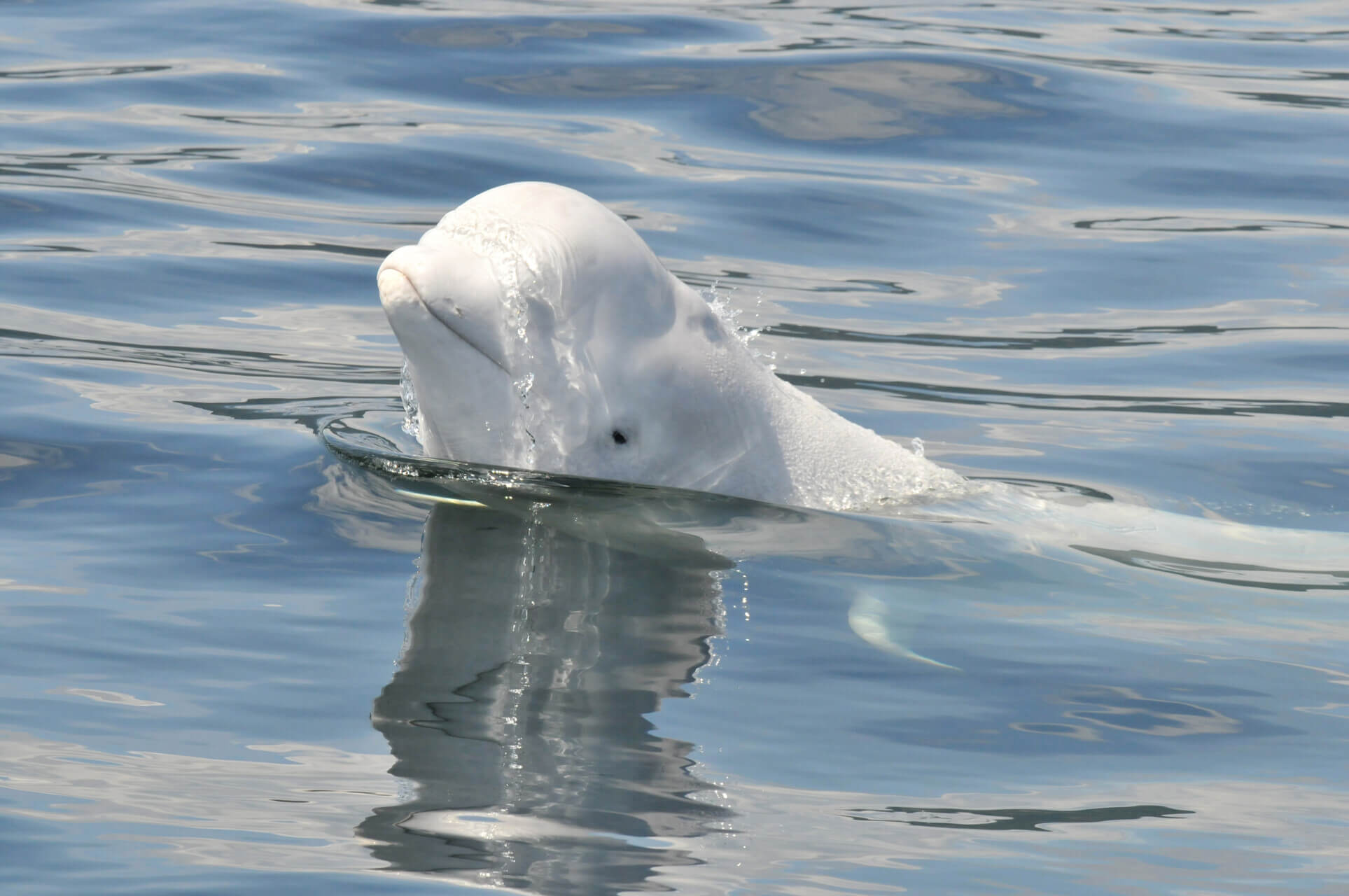Like humpbacks, toothed whales (odontocetes) and dolphins in particular stand out for their altruistic behaviour. However, the nature of this behaviour is variable. While humpback whales intimidate and drive predators away, toothed whales instead offer to help individuals that are sick, injured, or even dead.
Extending a helping “fin”
In the Netherlands, a rehabilitation centre for odontocetes opened in 1991 within the confines of a dolphinarium. Several years later, researchers studied the centre’s archives and published a paper on their findings in 2022. By analyzing the animal behaviours documented by staff members, the scientists found that three juvenile female white-beaked dolphins likely exhibited altruism toward two males of a different species: harbour porpoises!
The first observation describes a white-beaked dolphin calmly escorting an adult male harbour porpoise to an area used for veterinary treatment and feeding. The two animals had arrived at the centre on the same exact day, emaciated. The dolphin adopted this behaviour after observing employees guide the porpoise with a net for a few days. It received no training or reward for its cooperation. This voluntary participation of the dolphin allowed the employees to stop performing this task. According to the researchers, this behaviour can be considered altruism since it probably caused less stress than human intervention. It was probably also mutually beneficial: The dolphin benefited from less disturbance in its environment and the employees were relieved of some of their work!
The second sighting involved sick and emaciated juvenile porpoises that had arrived at the centre the same day and were placed in the pool with two dolphins. Less than an hour after the first porpoise arrived, the dolphins placed themselves on either side of it, and the three animals began swimming, diving and breathing in synchrony. Later, when the second porpoise arrived in the same pool, each dolphin paired up with a porpoise and proceeded to swim to the left of its partner, i.e. between the porpoise and the wall of the pool. Each pair started swimming in synchrony again.
By doing so, the dolphins made it easier for the porpoises to swim by enhancing their hydrodynamics and prevented the animals from injuring themselves on the walls of the pool. This is a good example of epimeletic behaviour, or offering help to sick, injured or dead individuals!
Altruism and evolution
Can these behaviours in white-beaked dolphins be explained by the theories of kin selection or reciprocity? If so, two questions would arise. Firstly, could the female dolphins have confused the porpoises with calves of their own species? Secondly, could they have mistaken the porpoises for their own offspring?
The main hypothesis is that the dolphins associated the porpoises with dolphin calves due to their similar size. In some dolphins, including the bottlenose dolphin and the Atlantic white-sided dolphin, females have already been observed providing maternal care to dolphins that are not their own, and even to those of other species. Additionally, researchers who had witnessed bottlenose dolphins exhibiting violent behaviour toward harbour porpoises had also put forward this hypothesis, this time to propose infanticide behaviour. However, in the case presented above, such an error would have been surprising. Due to their age, these juvenile female white-beaked dolphins were unlikely to have ever given birth. These two species also use different acoustic signals, which reduces the risk of confusion! This apparently altruistic epimeletic behaviour could also stem from an instinctive need of the females to care for the porpoises.
Another hypothesis rules out altruism and suggests sociability. Synchronized swimming, diving and breathing could have been a sign of cooperation between individuals in order to create a sense of comfort in a context of captivity. In dolphins, this type of behaviour is believed to be used to manage stress and social tensions, foster communication, defend against predators, and strengthen social bonds. Therefore, a behaviour that benefits both individuals would not be altruistic, but would rather have a social function in this case. Whether the synchronized swimming of a porpoise and a dolphin might also serve this function is unknown. Unlike dolphins, in porpoises only mother-calf pairs ever swim in synchrony. The authors speculate that if sociability were the goal, the two dolphins would have simply continued swimming together with no regard for the porpoises, unless their inclusion increased the degree of comfort that the dolphins experienced. The authors therefore favour the hypothesis whereby the dolphins were displaying altruistic behaviour toward the porpoises. However, it is difficult to determine the influence that captivity may have had on these animals and how they behaved.
Besides the theories of kin selection and reciprocity, are there other explanations (e.g. compassion) that might explain altruistic behaviour in animals?


